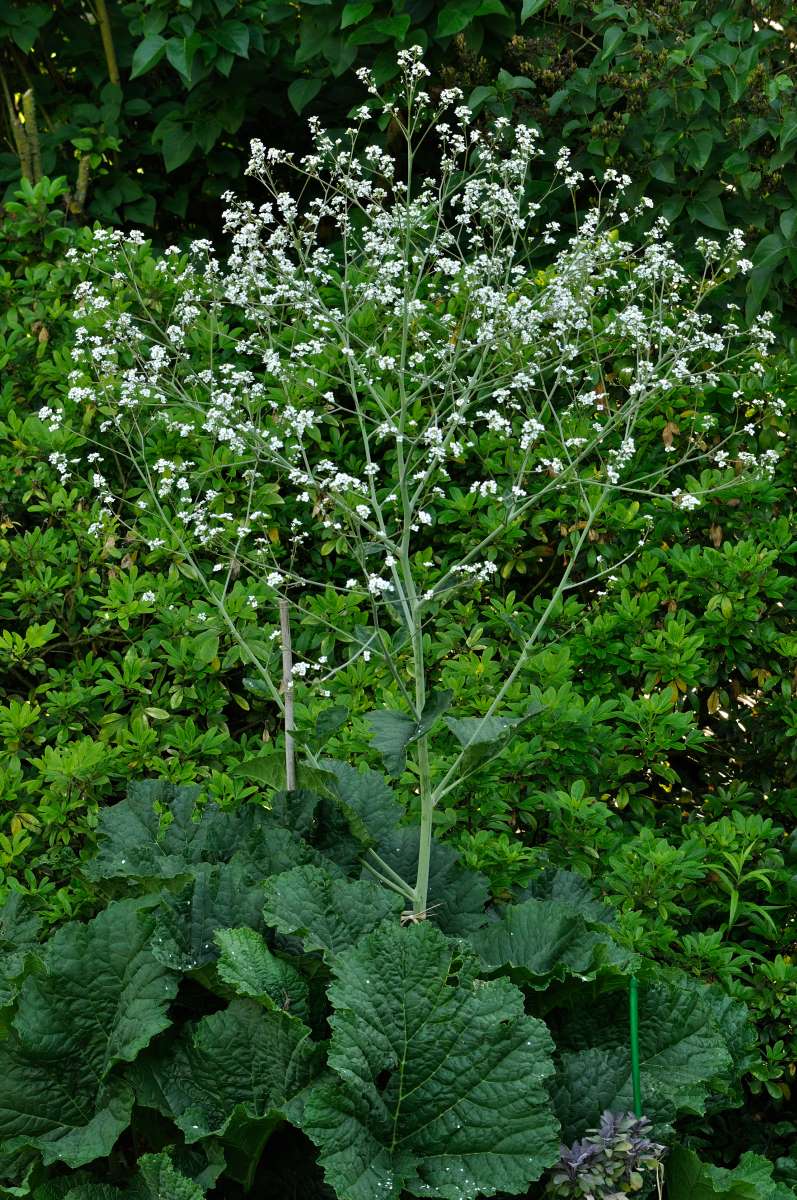Description
Crambe –
There are about 20 species of imposing, often woody based annuals and perennials, in this genus. They occur from rocky mountain sloped, coastal sand dunes, and open grassland, in Central Europe, Turkey, Central Asia and tropical Africa. They have large, simple to pinnatisect basal leaves and erect, often thick stems, which are usually leafless or bear smaller leaves. It bears numerous, 4 petalled, tiny, scented cross shaped, white or pale flowers, held in large racemes or panicles. Crambe species are grown for their handsome foliage and elegant inflorescences, which are attractive to bees. The enormous span of their leaves require siting in a large herbaceous border. They also thrive in wild or woodland gardens, and in coastal sites.
Grow in deep, fertile, well drained soil in full sun, although they will tolerate poor soils and partial shade. Provide shelter from strong winds. Divide in early spring.
Prone to clubroot, and black rot.
C. cordifolia – Colewort – This untidy, mound forming perennial from the Caucasus grows 6-8′ feet tall and 4-5′ feet wide. It produces long stalked, kidney shaped to ovate, puckered, toothed, bristly, dark green leaves 18″ and more across, which die down in mid or late summer. In late spring and mid summer it bears white starry flowers in many branched panicles, to 5′ feet across, atop of strong stems.
Zones 6-9





